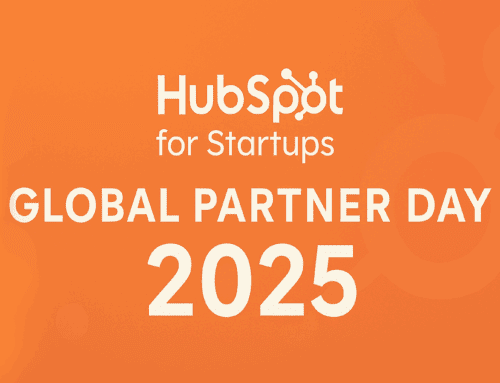Streamlining Meetup Data: Import Group Members into Google Sheets
Introduction to Meetup and Google Sheets Integration
Meetup is an amazing platform that connects like-minded people, bringing them together for events and gatherings. But managing large groups on Meetup can sometimes become overwhelming, especially when you need to handle data like member lists. That’s where Google Sheets comes into play. It’s a handy tool for organizing and sorting data with ease.
By integrating Meetup with Google Sheets, you can effortlessly maintain a list of your group members. This not only saves you valuable time but also streamlines the process of managing your member database. You’ll be better equipped to communicate with your members and keep track of attendance, among other things.
Why Automate the Process?
Imagine manually updating a spreadsheet every time someone joins or leaves your Meetup group. It sounds exhausting, doesn’t it? Automation solves this problem by ensuring your data stays up-to-date without constant manual input. This means less time spent on tedious tasks and more time focusing on what truly matters—engaging with your community.
Automation reduces the risk of errors, which can happen with manual data entry. By automating the transfer of Meetup data to Google Sheets, you’re ensuring accuracy and efficiency. Plus, who wouldn’t want to free up their schedule for more creative pursuits or strategic planning?
Tools Required for Integration
To integrate Meetup with Google Sheets efficiently, you’ll need access to some essential tools. First and foremost, ensure you have an active Meetup account to retrieve data from your group. Secondly, a Google account is necessary for utilizing Google Sheets. These two accounts will serve as the foundation for your integration process.
In addition, you’ll require Make (formerly Integromat). Make is a powerful automation platform that enables you to connect various apps and services seamlessly. With Make, you can automate the flow of data from Meetup to Google Sheets, eliminating manual effort and ensuring real-time updates.
Setting Up Make for Meetup and Google Sheets
The setup process starts with creating a scenario in Make. A scenario defines how data flows between different apps—in our case, from Meetup to Google Sheets. You’ll begin by connecting your Meetup and Google accounts within Make. This step ensures that Make can access and manipulate the data from both platforms.
After establishing connections, the next step involves defining specific actions, such as retrieving member data from Meetup and inputting it into a designated Google Sheet. Each action within the scenario must be configured carefully to ensure smooth data transfer. Don’t worry; Make provides a user-friendly interface that guides you through these steps easily.
Creating the Workflow: Step-by-Step Guide
With all connections ready, it’s time to build your workflow. Begin by selecting the trigger event—what action in Meetup will initiate the data transfer? Typically, a new member joining the group serves as a good trigger. Once the trigger is set, define what data and fields need to be transferred to Google Sheets.
Next, map the data fields from Meetup to the appropriate columns in your Google Sheet. Ensure each piece of data, such as names and email addresses, aligns correctly. After mapping, test the scenario to confirm that everything functions as expected. Make adjustments as needed to guarantee seamless operation.
Benefits of Using Google Sheets for Data Management
Google Sheets offers numerous advantages for managing Meetup data. Firstly, it’s a cloud-based tool, allowing you to access your data from anywhere with an internet connection. This accessibility ensures you’re never out of touch with your group, even on the go. Additionally, Google Sheets supports real-time collaboration, meaning multiple users can view and edit the data simultaneously.
Another benefit is the ease of data analysis and visualization. With built-in functions and chart options, Google Sheets enables you to quickly interpret data trends and insights. Whether you’re tracking member growth or evaluating event attendance, these tools provide invaluable support in making informed decisions for your group.
Troubleshooting Common Issues
No technology is flawless, and occasionally hiccups may occur. If you encounter issues during the integration process, there are several troubleshooting steps you can take. Double-checking that all account permissions are correctly set up is a great starting point. Ensure that both Meetup and Google Sheets have granted necessary access to Make.
Additionally, review the scenario settings in Make to confirm each step is configured correctly. If problems persist, consulting the comprehensive help resources offered by Make or reaching out to their support team could provide further assistance. Remember, patience and persistence often pay off when resolving technical challenges.
Conclusion: Simplify Your Meetup Management
By integrating Meetup with Google Sheets using Make, you’re stepping into a new era of efficiency and organization. No longer bogged down by manual entries, you can focus on what truly matters—nurturing and growing your community. This seamless integration ensures your member lists are always current, reducing errors and freeing up your time.
Dive into this world of automation and experience firsthand the benefits of smart data management. Not only will it transform how you handle your group’s data, but it will also enhance your interaction with members. So why wait? Start automating today and enjoy the streamlined Meetup management process!
Frequently Asked Questions
What is Make, and how does it work?
Make, formerly known as Integromat, is a powerful automation platform that connects various apps and services. It allows you to create workflows, transferring data seamlessly between different applications without manual input.
Can I customize the data fields transferred to Google Sheets?
Yes, you can customize the data fields that are transferred. During the setup process in Make, you have the ability to map specific fields from Meetup to the corresponding columns in your Google Sheet.
Do I need any coding skills to set up this integration?
No coding skills are required. Make offers a user-friendly interface that simplifies the process, guiding you step-by-step to create and automate your workflows without needing to write any code.
How often is the data updated in Google Sheets?
The frequency of data updates depends on how you’ve configured your scenario in Make. You can set it to update in real-time whenever a new member joins or at regular intervals based on your preferences.
Is it possible to revert changes made by automation in Google Sheets?
Yes, Google Sheets maintains a version history, allowing you to revert to previous versions if needed. This feature provides a safety net, ensuring that you can undo unintended changes made by automation.









